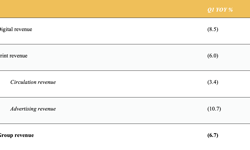Most long-established publishers have an untapped treasure trove of back issues, special editions and reference material that they would love to put onto their website. This applies to books, catalogues and part works as well as consumer and trade magazines and newspapers. To date it hasn't been cost-effective to manually upload this content onto your website, and it has been hard to navigate the issues of copyright and work out how to monetise the content. However, it is getting easier to directly transfer print material or PDFs into page turning emags, searchable archives or even web pages and many publishers are finally making real money out of their heritage content.
This article looks at how you can make money from your archive, what are the different solutions available and what they involve. It provides some case studies from other publishers who have used archiving to drive revenues. And finally we consider some of the roadblocks and issues that arise in digital archiving projects and suggest some possible solutions.
How you can make money from your archive
Before you start thinking about your budget and the solution you should use, it is worth taking some time to consider where your business can derive value from your archive, as this will determine the features that you require.
* Pay for search pass. Many publishers – including the Guardian, the Scotsman and the Stage - charge for access to archives, either in terms of a time-based pass, or as an added benefit for subscribers. Some offer the first few searches free.
* Grow search traffic and prominence of your brand online. If your archive content is visible to search engines, you can significantly grow your natural search traffic. Depth of content on key topics will improve your listings, making you the first choice for visitors. You can potentially charge a premium for targeted ads for users searching on particular topics or search terms. An established publisher with greater heritage can dramatically enhance its market position over smaller rivals. Translation services can provide a credible web presence in non-English speaking territories.
* Provide a richer experience for users. Integrating your archive material into your site content can enhance the user experience as well as your brand reputation, and increase the time spent on your site and engagement with your audience.
* Licence or syndicate content to third parties. An online archive is easier to syndicate to overseas or non-competing publishers, institutions or libraries.
* Collect emails and market subscriptions. Many publishers don't charge to search the archive but request email details instead. Searchers are likely to be interested in your magazine and be good subscription prospects. You can also directly market subscriptions on results pages of archive searches. Take care though to ensure that content behind email registration walls is still visible to search engines.
* Sell images. Some digital archiving solutions separate out images and tag them. If you own copyright of the images, then you can sell high-quality prints. Alternatively, you can negotiate a deal with freelancers to split the revenue from any subsequent photo sales. If you have a really extensive gallery, users could create their own photo books or quality prints.
* Sell related products to searchers. Depending on the nature of your archive content (eg product reviews of any description), you can sell related products (eg books, music recordings or tickets), to users searching your archive.
* Sell sponsorship of archive. Retailers of related products may value overall sponsorship.
* Grow overseas and membership subscriptions. Use digital editions to extend your overseas reach for territories where print is not cost-effective, or for association or membership subscriptions – see example of Dive magazine below.
* Add value to subscription package. Make your subscribers feel like valued customers by including a free pass to searching your archive bundled with their print subscription, or a downloadable PDF of the magazine as well as the printed copy.
* Assign value to an asset. If your publication has an extensive heritage, your back issues are hard to value when they exist purely in print form. However, if you can digitise your archive in a format that can be licensed, syndicated or is easily searchable, then you can assign a value to it on your balance sheet.
* Publish specials, or even custom publish. If back issues are easily available and searchable online, your editorial team can compile specials for publishing in print. Users could specify which areas they are interested in and order custom publications in print or as a download.
* Charge for downloads. Highly valuable content, such as detailed product reviews of high ticket items could be available as a downloadable and printable PDF in return for a small payment. Best for products with a relatively long life cycle, and a strong second-hand market, such as cars or yachts.
* Make editorial savings or efficiencies. Including back issues in a searchable online archive, and adding new issues to the archive will save your editorial team time researching new articles or adding current issue content to the site.
Digital archiving options
The type of revenue opportunities you anticipate, the size of your archive and your available budget will determine the type of archiving solution you need. All solutions involve:
* scanning from print or microfilm to create digital images (PDF or TIFF)
* running OCR (optical character resolution) to create a text version
* creating a searchable and navigable digital library
* building the web interface, with pay systems as appropriate
The simplest solution is to use a Flash-based programme to create page-turning magazines. This can be very cost-effective but it is harder to reuse the content for syndication, and it is less visible to search engines. This approach is fine if your revenue opportunities are based on providing services to existing subscribers in magazine format, rather than driving traffic through search.
The next level is creating an XML version of your newspaper or magazine pages (eg Olive), which allows users to search for individual articles. Articles are displayed as originally published, not as text on web pages. Olive says it is working with Google to help robots index archives. This was used by newspapers like the Scotsman. XML files can be exported into HTML web pages, plain text or other XML formats. Olive estimate that digitisation costs up to 30p/page and the web interface could add a further £10-15k.
If traffic growth is your priority, you may achieve better search engine results by displaying your digitised XML content as webpages (eg Netcopy. Content is fed into HTML templates; then you can add custom tagging, separate out images and tag them separately, and put each article on its own individual webpage with its own URL. Once content is on web pages, you can add custom development, such as editorial comments and user comments, links to related articles or the most popular articles, a pay gate to charge users for extensive searching, registration forms to capture email addresses, or e-commerce facilities for related products. A system like Netcopy is only practical if you have over 10,000 pages to digitise because of the setup costs. You could digitise an archive of this size and create some sophisticated web functionality for around £8-10k.
If your main focus is on syndication revenues, especially overseas, and to institutions, and you lack the resource to sell yourself, an alternative is to use an aggregator (eg Proquest or Cengage), who will both digitise and market your content. The Economist has used Cengage for its archive.
What have other publishers done?
Dive magazine use their page turning digital edition to offer digital subscriptions to the membership of the British Sub Aqua Club as an alternative to print. They have also used digital editions to extend their overseas subscription base, both to consumers and to dive shops. In some territories, such as Korea, they can offer bespoke pages, and have used their extended overseas reach to negotiate better rates with advertisers. They also use digital editions to extend the reach of ad-funded supplements – these exist in print for retail copies, but in digital form for subscribers and other targeted recipients. Publisher Graeme Gourlay warns publishers against bundling digital with print and setting too low a price; for digital-only overseas subs, Dive’s rates are close to print.
The Scotsman has been the paper of record in Scotland since 1817, and one of the motives behind digitising its archive in 2004 was a sense of a social responsibility to maintain in perpetuity the content of all its newspaper editions. The focus is on a paid content model rather than driving traffic. General manager Henry Faure Walker explained that they offer a tiered pricing structure for timed access to the archive, and sell a substantial number of these each year. The email addresses collected are used to market the paper and other associated products. However, the big opportunity is selling access to institutions such as libraries, universities and schools, both in the UK and overseas, especially in the US with its large Scottish diaspora. This is now all being handled by Proquest as part of their “historic newspapers” portfolio.
Gramophone (published by Haymarket) created an archive of 250,000 articles from 114,000 printed pages using Netcopy. With only 10% indexed so far, the archive has generated over thirty thousand new unique users, of which 37% arrived via natural search, and average time spent is over ten minutes. Haymarket believe that the depth of the archive will put Gramophone in an unassailable position within search on classical music. A simple CMS allows editors to add new contextual content to each archived article. Subscribers benefit from exclusive access to the current and previous editions. Gramophone plan to charge for extensive access to the archive, and add an e-commerce platform.
What are the major roadblocks and solutions?
* Upfront investment. This is often the biggest barrier to smaller publishers digitising their archive. The best options are to secure sponsorship of the archive, or to set up a syndication deal with a major online publisher. If you lack syndication skills, ask a specialist digital archiving provider (eg The Digital Publishing Company) for advice, or go direct to Proquest or Cengage. Some providers are offering revenue share deals to ease the cost of integrating payment systems and digital subscription management.
* Copyright. Many publishers are concerned about freelancers holding copyright, especially on images. However many of the more sophisticated archiving systems can separately isolate images and tag them by photographer. Some publishers have offered a revenue sharing deal with all their freelancers, suppressing the images of those who decline. In practice though, most freelancers are happy to gain a small amount of additional revenue per view of their image and the opportunity to sell images.
* Hosting costs. An important consideration is the speed with which users can retrieve articles from an extensive archive. Ask your solution provider what arrangements they have for hosting and ensure you do some testing.
In summary, digitising your archive can rapidly add significant content to your websites, enhance the authority of your brand online, and create the opportunity to drive a number of new revenues. I’d recommend thinking through exactly how your business can drive revenues before you decide which archiving solution you want to use.










